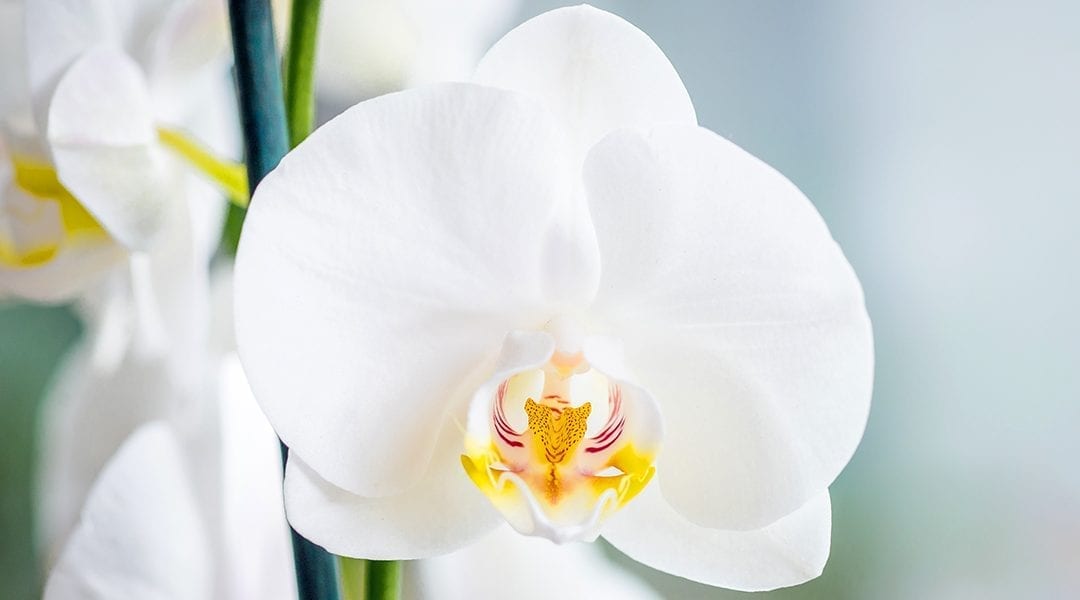Life is busy, so who wouldn’t want to add some spa-like serenity into their home? Orchids, and Moth Orchids, in particular, have been enjoying explosive popularity over the past few years. These striking houseplants are instantly recognizable by their colorful “faces”, gracefully angular stems, and lush, glossy leaves. Orchids are neither hard to find nor hard to fall in love with—but they do have a reputation for being hard to care for.
Here at Platt Hill Nursery, we’re certain that this bad rap stems from a lack of information. Orchids are epiphytes, which means they do have different needs compared to the average leafy-green houseplant. But in fact, when you understand your Orchid’s needs, you might find that they’re some of the least demanding plants in your home!
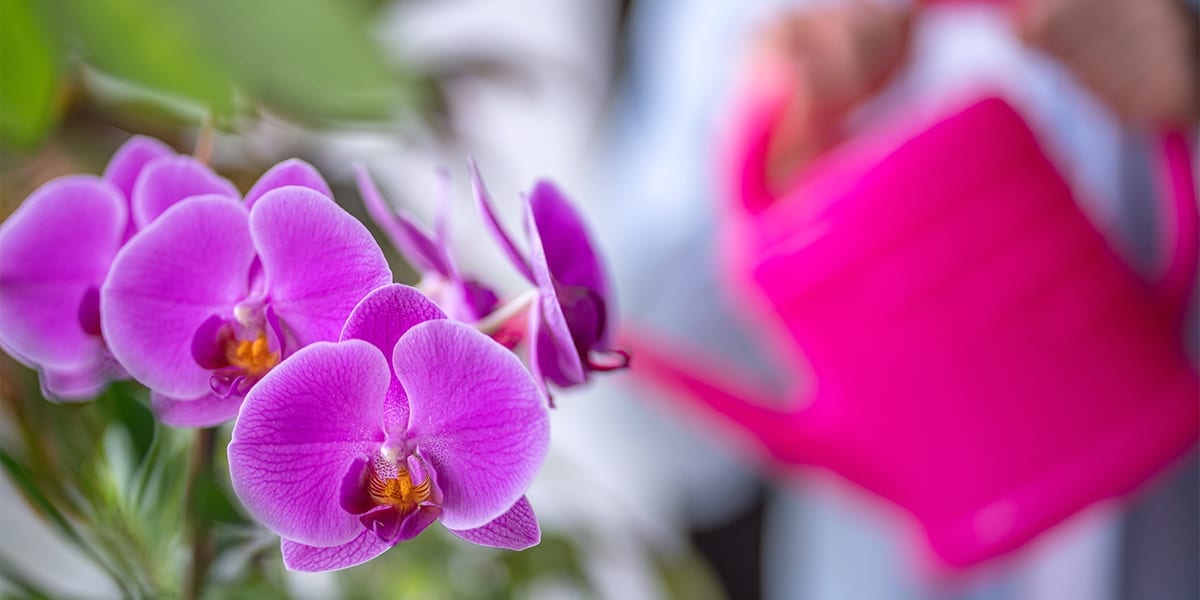
What are Epiphytes?
Before we get into the nuts and bolts of orchid care, it’s important to understand what an epiphyte is. Orchids are not the only epiphytes in the world of common houseplants; bromeliads and tillandsia (or “air plants”), for example, are epiphytes that you’ll notice have a lot in common with Orchids when it comes to maintenance.
By definition, an epiphyte is an organism that grows on the surface of another plant and absorbs everything it needs to survive from the surrounding air, rain, and nearby organic matter. The key difference between your Moth Orchid and, say, your Weeping Fig, is that the Moth Orchid doesn’t require “soil” the same way the Weeping Fig does. In the wild, Moth Orchids grow with their roots clinging to the bark of trees. The spongy green casing around the roots absorbs nutrients that sit on the bark surface, and pull in moisture from falling rain and the humid forest ecosystem.
Due to their natural habitat under tree canopies, Orchids don’t need a lot of light or a lot of water. However, they do need the right growing media, the right intake of nutrients, and the appropriate amount of light and water to mimic their conditions in the wild. Fortunately, it’s easy to recreate your Orchid’s natural environment indoors.
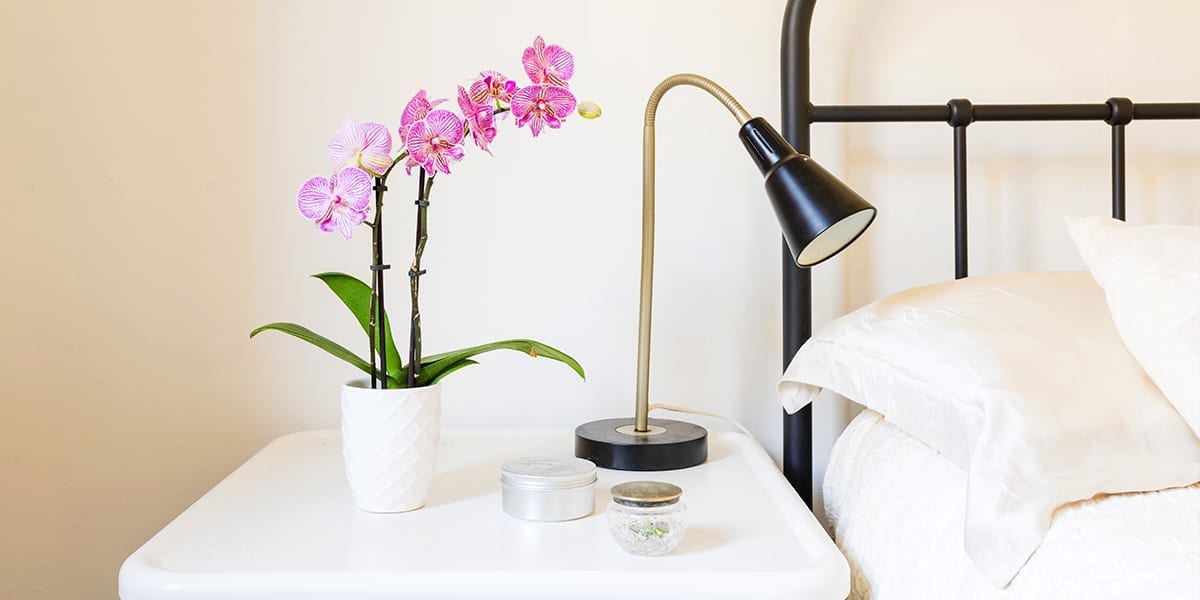
Moth Orchid Care
After picking out your Moth Orchid, take a little extra time to chat with one of our associates about Orchid care products before you leave our garden center. The right products will make an incredible difference in the longevity of your plant while making Orchid maintenance so much simpler for you!
Sun
In the wild, the tree canopies above protect Moth Orchids from direct sunlight. Indirect sunlight is your best bet for recreating these conditions in your home. Keep your Orchid near a bright window, but out of the way of intense, direct rays. You can also place the Orchid next to a bright window with a sheer curtain, which helps filter out the harshness of the sun.
With the right light, the leaves should have a lovely olive green color. Darker green leaves could indicate that the plant needs more light, whereas a red, burnished look indicates that the Orchid is getting sunburned!
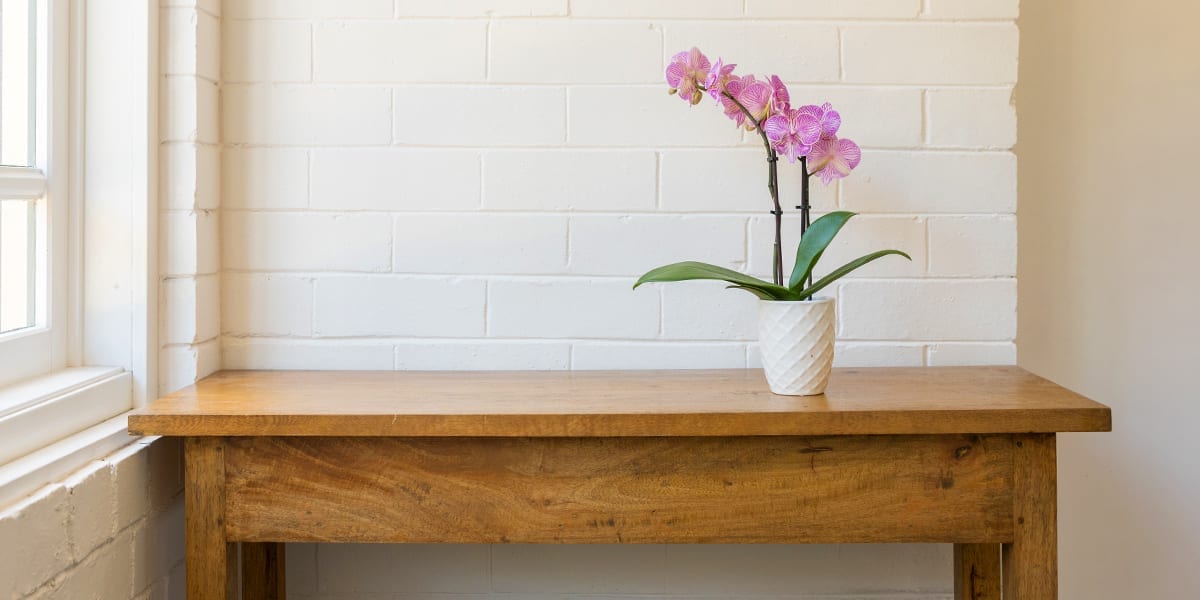
Pots & Soil
While there’s much debate about the benefits of terra cotta pots versus plastic pots for Moth Orchids, the truth is that they both have pros and cons. What’s certain is that any pot that will house an Orchid must have drainage holes, as Orchids do not tolerate standing water.
Orchids also seem to prefer stouter, wider pots (like bulb pots) to taller, slimmer standard ones. You may even be lucky enough to find an Orchid pot, which has special slits in the sides that promote airflow through the roots and growing media.
Speaking of growing media, Orchids are often sold in a sphagnum moss blend, which retains a little more moisture than is ideal. The best “soil” for Orchids is actually a specialty Orchid potting mix. This mix is a soil-free blend of bark pieces.
To repot Moth Orchids, water them first, and pour a few inches of Orchid mix into the new pot. Then, gently coax the root ball out of the old pot and carefully remove the moss or potting medium from the root ball. Place the Orchid in the new pot and backfill with Orchid mix on all sides. Water again to give the roots and the potting mix a chance to settle.
Water
Most people run into Orchid care issues due to overwatering. Orchids only need to be watered approximately once per week, ideally in the morning. In the spring and summer, when the Orchid is blooming and producing more new growth, it may need water slightly more often. Always water the soil directly; never pour directly on the leaves or flowers.
The best way to keep an eye on your Orchid’s water needs is to check the weight every day, and a second time after watering. As you learn what a dry pot feels like compared to a moist one, you’ll be able to tailor your watering schedule and water your Orchid when the pot feels a little too light.
For your Orchid, humidity is more important than water. While some folks like to mist their plants to boost humidity, Orchids don’t respond well to this method. To replicate the humidity of your Orchid’s natural environment, consider keeping a humidifier in the room near the plant. Alternatively, you can place a layer of pebbles on the drip tray or saucer beneath the plant’s pot. Whenever you water your Orchid, the water will collect in the saucer and slowly evaporate into the air surrounding the plant.
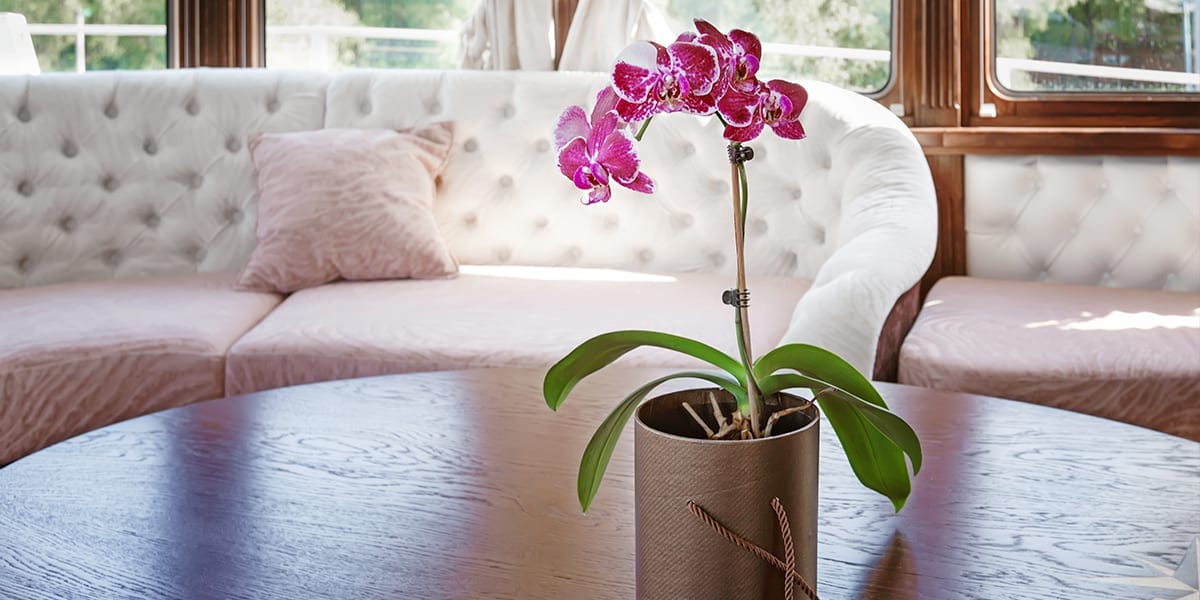
Feeding
Contrary to what you’d expect, the Orchid’s flowering period is when it needs the least fertilizer. When the plant is blooming or in a dormant state, there’s no need to feed. When the plant is in its “vegetative” state (in other words, when the green stuff is growing), it’s happy with a dose of diluted, half-strength Orchid fertilizer weekly to bi-weekly. Water the plant first before applying fertilizer, and make sure to water thoroughly between every other application to flush out any extra salts that have built up in the pot.
With the right pot, proper growing media, and an ideal location, you’ll notice that caring for Orchids doesn’t take much. As long as you pay a little attention to the moisture in and around the pot, and throw in the occasional dose of fertilizer, your Orchid will happily grace your home with its serene beauty. Visit one of our Chicagoland garden centers in Bloomingdale or Carpentersville to find a vibrant, healthy Orchid or your own—and everything you need to keep it blooming for years to come!
Platt Hill Nursery is Chicago’s premier garden center and nursery.

